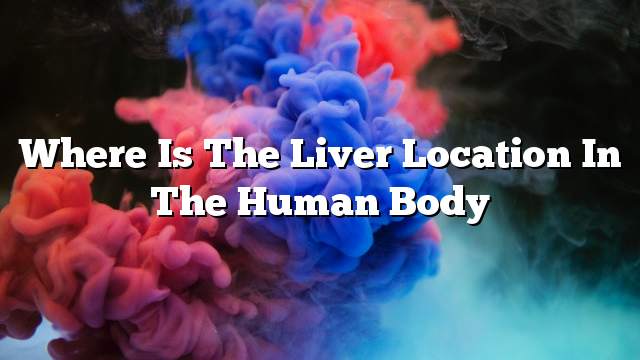Liver
The liver occupies the second place in the human body – after the skin – in size, which amounts to 2-3% of the total body weight, weighing between a kilo and a half to two kilograms in an adult. The liver has several lobes, but the most important is the right lobe and the left part.
The location of the liver in the human body
The liver is located in the abdominal cavity in the upper part of the right. Specifically, it separates between the lung and the so-called diaphragm, and is surrounded by the outside of the right part of the thoracic cage and thus the process of protection of the liver, liver and several functions in the human body,
Liver functions
- The liver manufactures various organic and chemical substances such as:
- Produces some hormones and performs a balance of male hormone (testosterone) and female hormone estrogen.
- Production of bile material.
- Production of amino acids needed for the body.
- Cholesterol production after cracking fat to convert it to cholesterol.
- Producing a group of important proteins such as albumin, the protein needed to control the water balance in the body, and produces the proteins needed to perform the clotting.
- The liver is the main store in the human body for its ability to store the following:
- Starches: To control the level of sugar in the blood, and provide it when it is lacking.
- Ability to store fat for cracking and is used for the need to get the necessary energy.
- The liver cleanses the blood and rid the body of harmful substances, such as drugs, alcohol, and some substances that arise from chemical reactions such as ammonia.
Liver nutrition
The liver, like any member of the body needs nutrition to be able to do its functions, so there are many blood vessels that go through to carry out the feeding process, as the main source of blood in the liver is the portal vein Portal Portal, 75% of the blood flow to the liver, and provides him with the necessary food, and the rest of the blood is obtained by the hepatic artery, which is known as (Hepatic Artery), which is responsible for the delivery of oxygen needed for the liver, so 25% of the blood in the human body passes In the liver during its course, which is the highest proportion in the human body. The most common liver diseases are:
Liver diseases
- Some benign tumors or some cancerous tumors.
- Fatty liver or (liver fat).
- Viral hepatitis is classified globally according to its seriousness to: (A), (B), (C).
- Cirrhosis caused by viral infection or schistosomiasis.
- Some rare diseases occur as a result of a defect in some genes or due to the storage of certain substances in the liver such as copper or iron.
